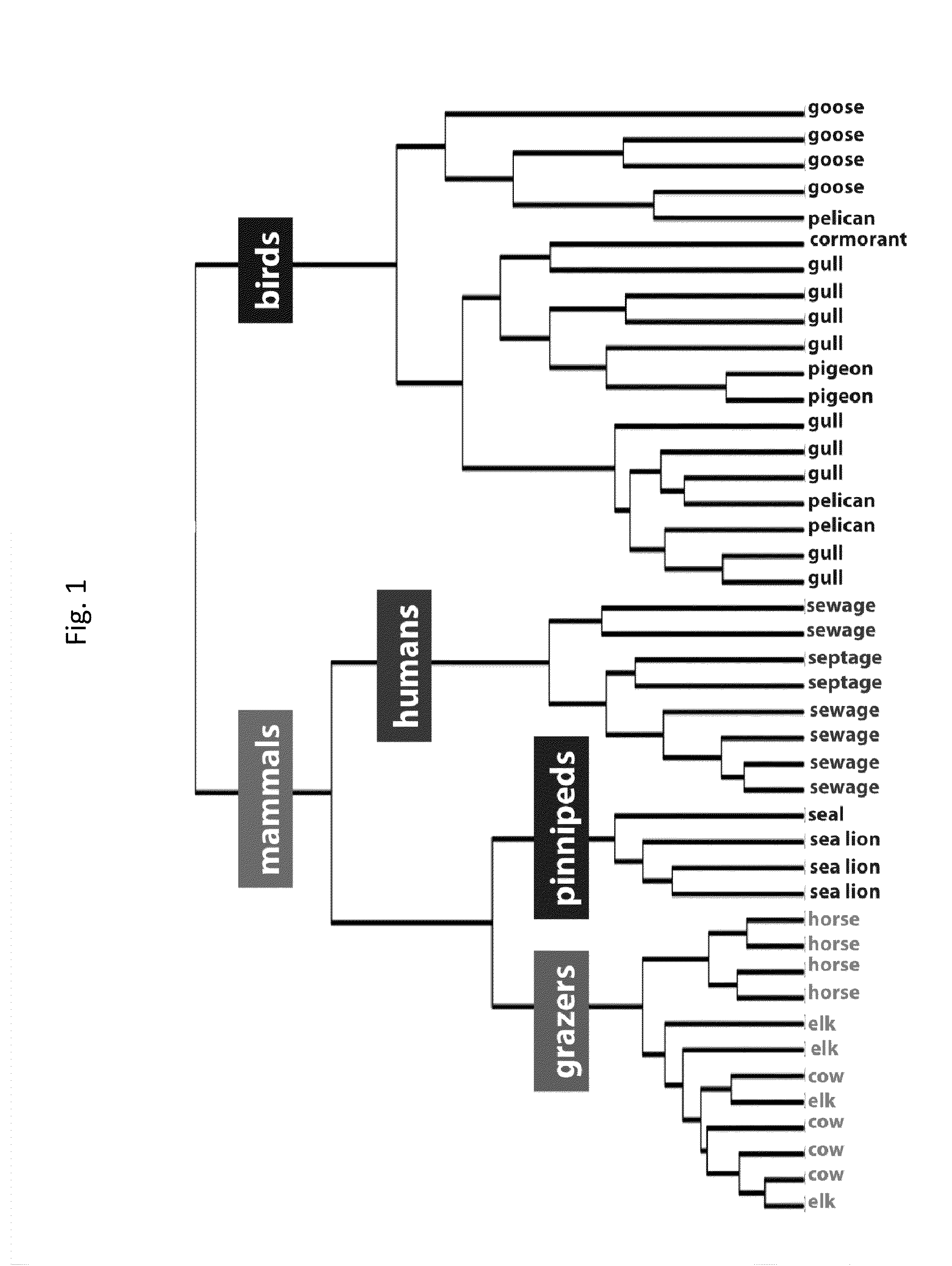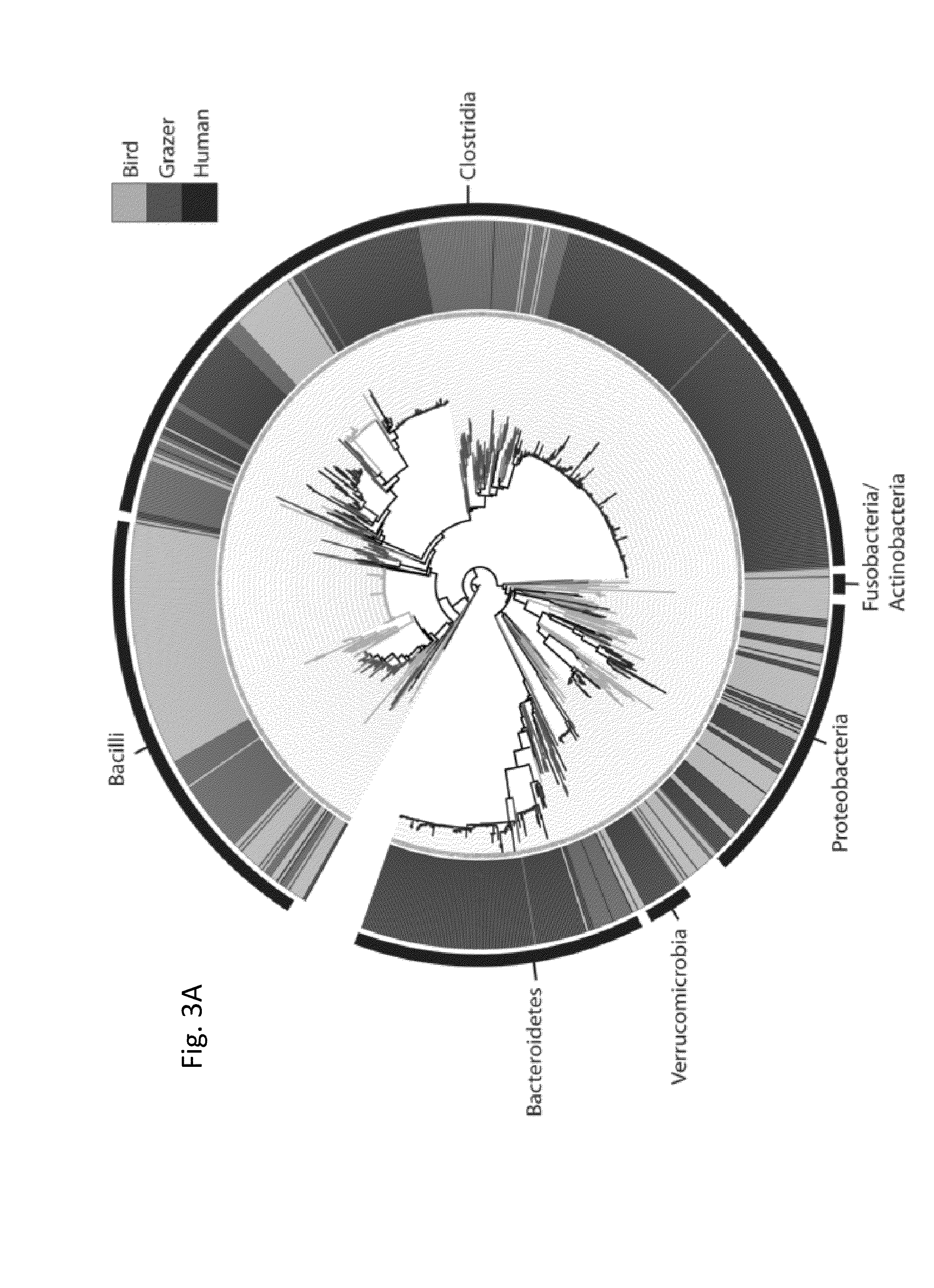Methods and compositions for identification of source of microbial contamination in a sample
- Summary
- Abstract
- Description
- Claims
- Application Information
AI Technical Summary
Benefits of technology
Problems solved by technology
Method used
Image
Examples
example 1
Fecal Sampling and Source of Contamination
[0052]In this study we used a high-density oligonucleotide microarray to census the 16S rRNA gene diversity in different sources of fecal contamination. The microarray targets 59,316 different 16S rRNA gene polymorphisms that represent most known phyla of bacteria. We test the assumption that different avian and mammalian fecal sources can be distinguished on the basis of their bacterial community composition. We screened a variety of fecal sources of concern in coastal California to identify the microbial groups that are source-specific, and then used these unique taxa to detect influence from these sources in marine samples that exceeded water quality limits for fecal indicator bacteria
[0053]Feces Sampling and DNA Extraction.
[0054]Human fecal wastes and freshly deposited droppings from animals were collected at numerous locations throughout California. Human fecal wastes included primary influent or effluent from eight different municipal ...
PUM
| Property | Measurement | Unit |
|---|---|---|
| Fraction | aaaaa | aaaaa |
| Fraction | aaaaa | aaaaa |
| Fraction | aaaaa | aaaaa |
Abstract
Description
Claims
Application Information
 Login to View More
Login to View More - R&D
- Intellectual Property
- Life Sciences
- Materials
- Tech Scout
- Unparalleled Data Quality
- Higher Quality Content
- 60% Fewer Hallucinations
Browse by: Latest US Patents, China's latest patents, Technical Efficacy Thesaurus, Application Domain, Technology Topic, Popular Technical Reports.
© 2025 PatSnap. All rights reserved.Legal|Privacy policy|Modern Slavery Act Transparency Statement|Sitemap|About US| Contact US: help@patsnap.com



